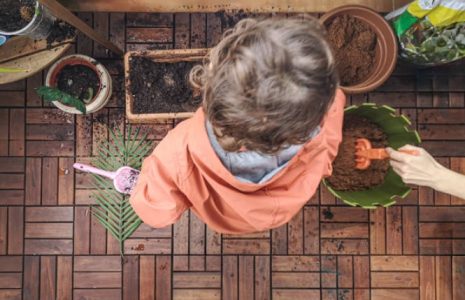No products in the cart.: $0.00
Are you tired of your indoor plants looking sad and unhealthy? If you’re using regular soil or compost indoors, that might be the problem! In this article, we’ll explain why soil isn’t the best choice for indoor plants and what you can do instead. Keep reading to learn how to keep your houseplants thriving!
Why Soil Can Be Bad for Indoor Plants
1. Poor Drainage Causes Root Rot
One of the biggest problems with using soil indoors is drainage—or lack of it. When soil gets wet, it becomes dense and clumpy, which traps water around the roots. Without enough air pockets, the roots can’t breathe. This leads to a condition called root rot, where the roots turn black, mushy, and die.
Root rot happens because plant roots need oxygen just like we do. Without oxygen, harmful bacteria start eating away at the roots, causing them to rot. Imagine having your toes stuck in soggy mud all day—it wouldn’t feel good, right? Your plants feel the same way!
2. Mold and Fungus Love Soil
Soil is full of organic matter, which is great outdoors but not so great indoors. Inside your home, this organic matter creates the perfect environment for mold and fungus to grow. Have you ever noticed white or green mold on the surface of your plant’s soil? That’s a sign your soil is staying too wet for too long.
Mold isn’t just gross—it can also harm your plants by competing with them for nutrients. Plus, it makes your home look messy and uninviting.
3. Fungus Gnats Are Attracted to Soil
If you’ve ever had tiny bugs flying around your plants, chances are they were fungus gnats. These annoying little pests love moist soil because their larvae feed on fungi and decaying material. Once they move in, they lay eggs, and soon you’ll have an infestation on your hands.
Fungus gnats don’t just buzz around annoyingly—they can damage your plants by munching on tender roots. Yikes!
What Can You Use Instead of Soil?
1. Coconut Coir: The Perfect Alternative
Instead of soil, try using coconut coir. Coconut coir is made from the outer husk of coconuts and provides excellent drainage while still holding onto moisture. It’s lightweight, airy, and doesn’t get soggy like soil does. Plus, it discourages mold and fungus gnats!
However, there’s one thing to keep in mind: coconut coir doesn’t contain nutrients naturally. You’ll need to fertilize your plants regularly to make sure they stay healthy.

2. Perlite and Other Additives
Another great option is perlite, a lightweight volcanic rock that helps improve drainage. You can mix perlite with other materials like bark, sand, or coconut husks to create a chunky, well-aerated growing medium. Tropical plants like monsteras and alocasias love this type of mix because it gives their roots plenty of room to breathe.
For succulents and cacti, you can use a mix of perlite, sand, and a small amount of compost. This mimics their natural habitat and keeps their roots happy.
3. Semi-Hydroponics: Growing Without Soil
If you’re feeling adventurous, you can try semi-hydroponics! In this method, plants grow in materials like LECA (clay pebbles) or perlite instead of soil. Water and nutrients are delivered directly through the roots, which eliminates many common problems like root rot and pests.
While semi-hydroponics requires a bit more effort (like cleaning the clay pebbles), it’s a fantastic way to grow healthy, vibrant plants. Just remember to use special hydroponic fertilizers designed for water-based systems.
Tips for Keeping Your Plants Happy
1. Choose the Right Mix for Your Plant
Different plants have different needs. For example:
- Tropical plants: Use a mix with 30% perlite and 70% coconut coir.
- Succulents and cacti: Go for a mix with equal parts perlite, sand, and compost.
2. Improve Air Circulation
Good airflow is essential for preventing mold and pests. Open a window or use a fan to keep the air moving around your plants.
3. Water Wisely
Overwatering is a common mistake. Always check if the top layer of your growing medium is dry before watering again. Remember, it’s easier to add water than to take it away!

Conclusion: Ditch the Soil for Healthier Plants
Switching from soil to alternatives like coconut coir, perlite, or semi-hydroponics can make a huge difference in the health of your indoor plants. Not only will you avoid issues like root rot, mold, and fungus gnats, but you’ll also enjoy happier, greener plants.
Ready to give it a try? Start experimenting with new growing mediums today and watch your houseplants thrive like never before!




